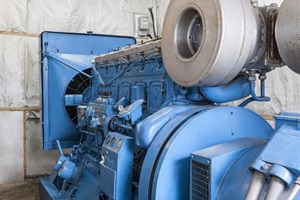- Energy Technologies
- Energy Technologies
- Natural Gas Gensets
- Policy and Regulation
- Policy and Regulation
- DER
New Florida Generator Law Presents Opportunity for Behind-the-Meter Flexible Generation

Governor Rick Scott recently signed bills into law that require all of Florida’s 3,774 nursing homes and assisted living facilities to have emergency backup power. The bills were first proposed in response to the tragedy in the aftermath of Hurricane Irma, when 12 residents lost their lives at one facility from heat-related symptoms. Thanks to new flexible generation business models, generators could be deployed to these sites in a way that could both generate additional revenue and provide elderly residents with even more reliable backup power than traditional standby generation.
Natural Gas Backup Generation Increasingly Attractive
The new bills require 48-96 hours of fuel to be stored onsite, though pipeline natural gas is exempt. This is in part thanks to the natural gas grid’s high reliability, which a 2013 MIT study pegged at around 99.999% in non-seismic areas, much higher than the electric grid. But natural gas is increasingly attractive for other reasons, too.
Natural gas gensets, while more expensive upfront than their diesel counterparts, tend to have lower emissions and levelized costs of energy. With about half the greenhouse gas emissions and far lower criteria pollutants, natural gas gensets allow for cleaner local air and are generally subjected to less air permitting scrutiny. Natural gas gensets can avoid the complex storage tanks of diesel generators. And when used for more than backup generation (as explained below), their levelized cost of energy can be lower than that of diesel gensets.
New Standby Generator Business Models Unlock Revenue Potential
Value stacking is a buzzword in distributed energy today, and it remains so for a reason. From the genset perspective, companies like PowerSecure, Enchanted Rock, and edgeGEN have been deploying gensets behind the meter at commercial and industrial sites. These gensets can provide backup power in an outage along with other services like peak shaving, demand response, and more to utilities and grid operators. Combined with third-party financing, these value-stacking flexible generation business models bring backup generation at steeply discounted costs to facilities managers that would not otherwise be able to provide them. As an important bonus, such operations can exercise generators at a much higher cadence than typical maintenance schedules, a practice that has been proven to enhance availability across fleets of generators.
Calls for Backup Power Present Opportunities
The Florida facilities, which include thousands of sites and hundreds of megawatts of capacity, could present a unique opportunity to deploy generators creatively like this—in microgrids with other distributed energy resources (DER) or even in a virtual power plant (VPP). In the VPP example, a network orchestrator that coordinates operations could enable thousands of generators to become a controllable power source ready to provide grid services for the 95%-plus of the time they are not otherwise being used. As a regulated electricity market not part of a regional transmission organization, Florida may not be the likeliest place for a major VPP—though nearly anything is possible in today’s rapidly changing regulatory environment. New calls for backup power like this present ever more opportunities to leverage the new connectivity, controls, and business models that make onsite generation smarter.